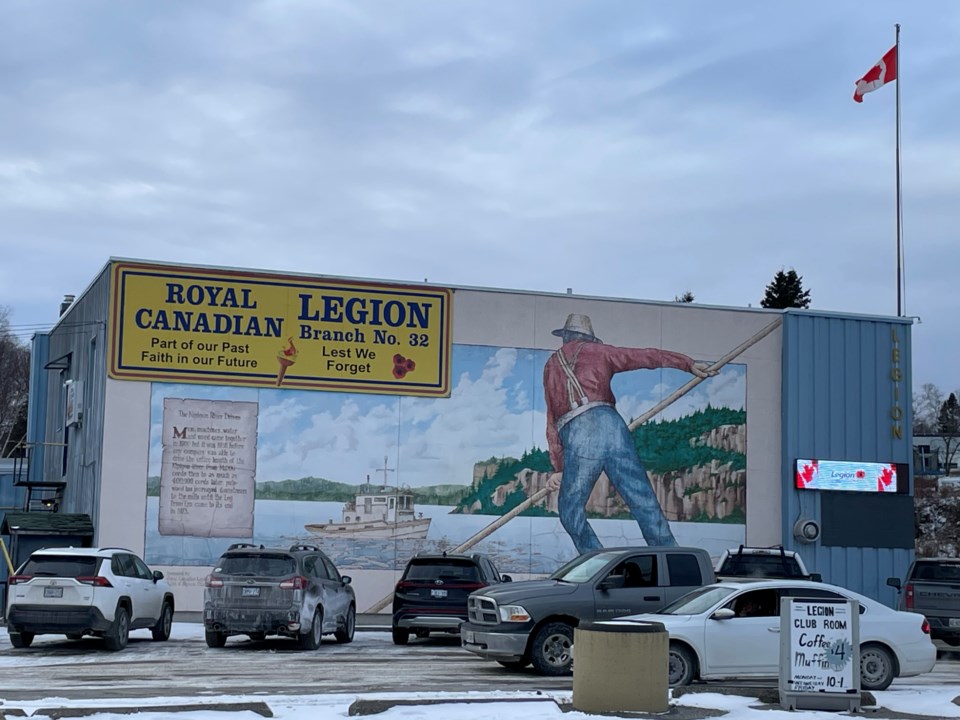NIPIGON — You might have heard someone you know or strangers in passing talk about how ‘nobody wants to work anymore’ or how there seems to be a lack of jobs available to people looking for work.
During the 2024 Thunder Bay District Municipal League (TBDML) conference and annual general meeting, however, municipal officials from across the region heard a different story during a presentation from Gary Christian, executive director of the North Superior Workforce Planning Board.
The TBDML conference and AGM was held at Branch 32 Legion in Nipigon from Feb. 29 to March 1.
Christian gave his presentation during the first day of the conference.
Speaking to Dougall Media, Christian said that between full time and part time there are over 1,200 jobs – amounting to about 667 part time jobs and 566 full time jobs – that aren’t being filled in the region right now.
“It’s amazing. Twenty years ago, we never would have said what we’re saying today. We would say, ‘we’ve got so many people but no jobs.’ It’s flipped completely. We’ve got tons of jobs but no people,” he said.
One major reason that so many positions remain unfilled at present is due to an aging population, according to Christian.
“We’re in a situation in this region in that it’s old, age-wise. By 2026, the Baby Boomers from ’59, ’60, ’61 are going to be at 65 or 66 years old – they’re leaving the workforce and when you look at the age population in our region, the majority of the stats are that age group.
"We’re in trouble in terms of age,” he said.
“That’s going to be even worse two or three years down the road because people at that age – at 65 – they’ve got their pensions, they’ve got their benefits – they’re not going to be interested in going to work. That puts more pressure on the workforce that we’ve got now because there’s going to be less people out there.”
He also added that another factor to think about are the number of remote jobs people can take advantage of nowadays, saying there is a “crazy amount” of jobs to discover online.
“You’re talking corporations in Vancouver, Calgary, Montreal, Halifax – they don’t care where you live. You can live at home in Thunder Bay or here in Nipigon… it’s changed dramatically,” he said.
Christian said that he and his team at the Workforce Planning Board carried out a project in 2022 where they surveyed international students to understand reasons why they choose not to stay in the north upon graduating.
The barriers that they identified are things that Christian said could “easily be fixed.”
Even still, Christian noted that a majority of jobs in the region end up being filled by immigrants and non-permanent residents anyway.
For example, he pointed to the new Greenstone Gold mine as a site that has attracted a multitude of international students.
“They graduate and they get jobs at the mine. Now they’re moving their families to Greenstone and so, now, Greenstone is growing in population – and they’re buying businesses in that region,” Christian said.
“It’s a good thing. It’s a very good thing.”
Greenstone’s Mayor Jamie McPherson spoke about the potential for growth in Greenstone.
“We have a huge opportunity for all workforce development in that we have the mine coming, we have the hospital going, we have the forest industry – specifically, the sawmill up in Nakina that’s only running one shift due to a shortage of workers,” he said.
Even with a growing number of newcomers and non-permanent residents moving to Greenstone and surrounding communities, McPherson said that they still have a long way to go.
“The opportunity that Gary Christian mentioned about 600 open jobs, probably two or three hundred of them are up in Greenstone. We have a huge shortage of people. When the mill shutdown 15 years ago, a lot of the families whose children would have been born 15 years ago and who would have turned 15 now and gone into the workforce, those people have all left. We’re missing that entire demographic, so we’re greatly looking forward to any opportunities to bring more people in,” he said.
But another barrier, as Christian identified, is the recent cap on the number of study permits granted to international students means a huge loss in terms of workforce numbers.
“When you put that into the economy, picture the economy – and, don’t forget, [newcomers and students] aren’t going to be working at the Walmarts or Tim Hortons’ or restaurants where the part time jobs are because they’re not going to be here to get them. We’re putting ourselves in an even worse situation in terms of the labour market,” Christian said.
The key, then, is making a strong connection with and supporting newcomers and non-permanent residents when they arrive.
Christian said that a similar approach is needed with indigenous communities across the region in order to harness that workforce and provide opportunities.
“The salaries in our region are quite high. People here make good money,” he said.
On the other hand, as McPherson pointed out, there are many people who would work in the forestry or mining sectors but do not have the education or skillset required to do so.
“When the forestry industry collapsed 15 years ago, there was no opportunity for people to get that type of work and to get work experience. Now, we have the mines, we have that opportunity to get the right skillset for the people that they need. We have people, we have jobs – we need to marry the two,” he said.



